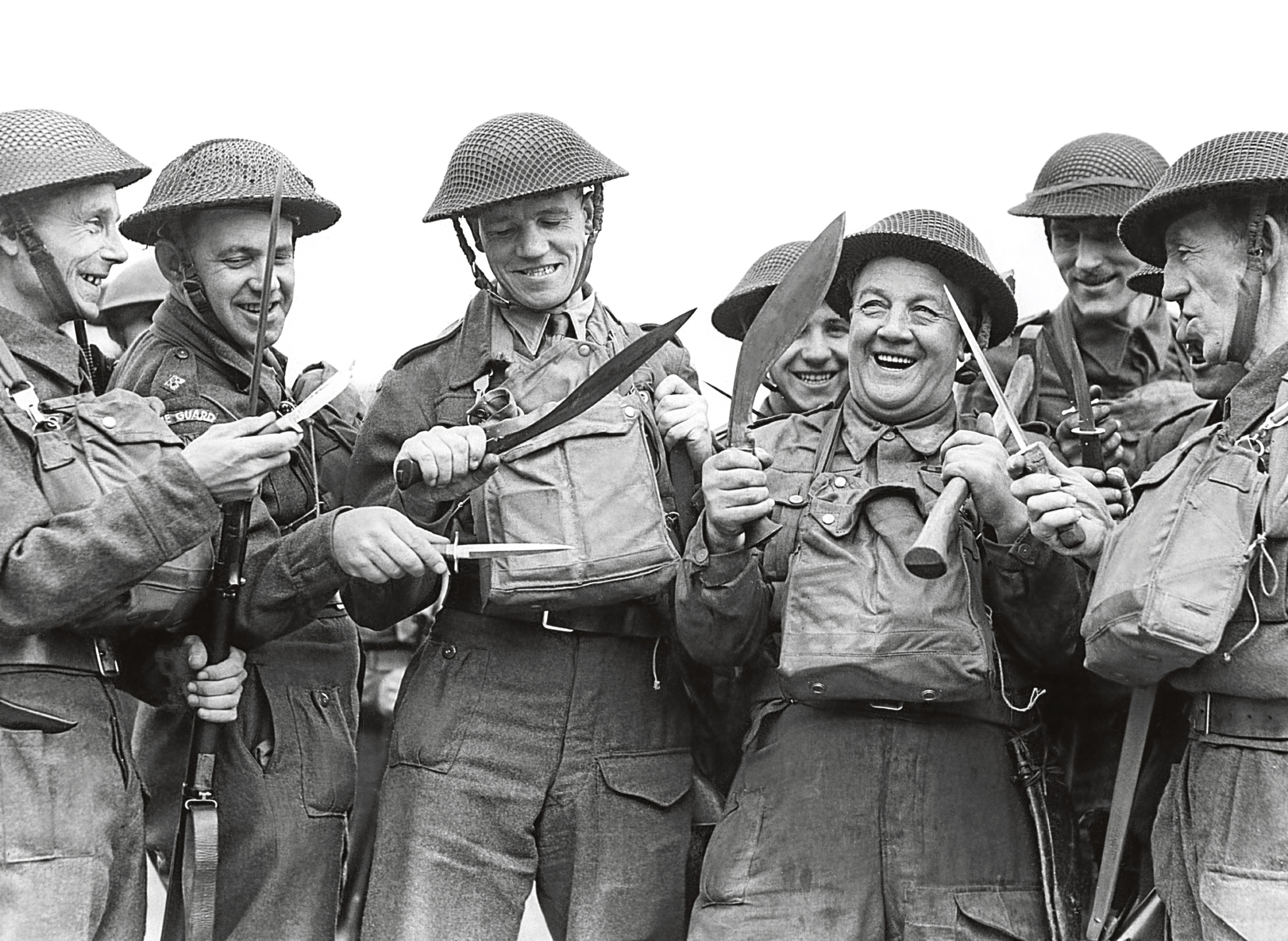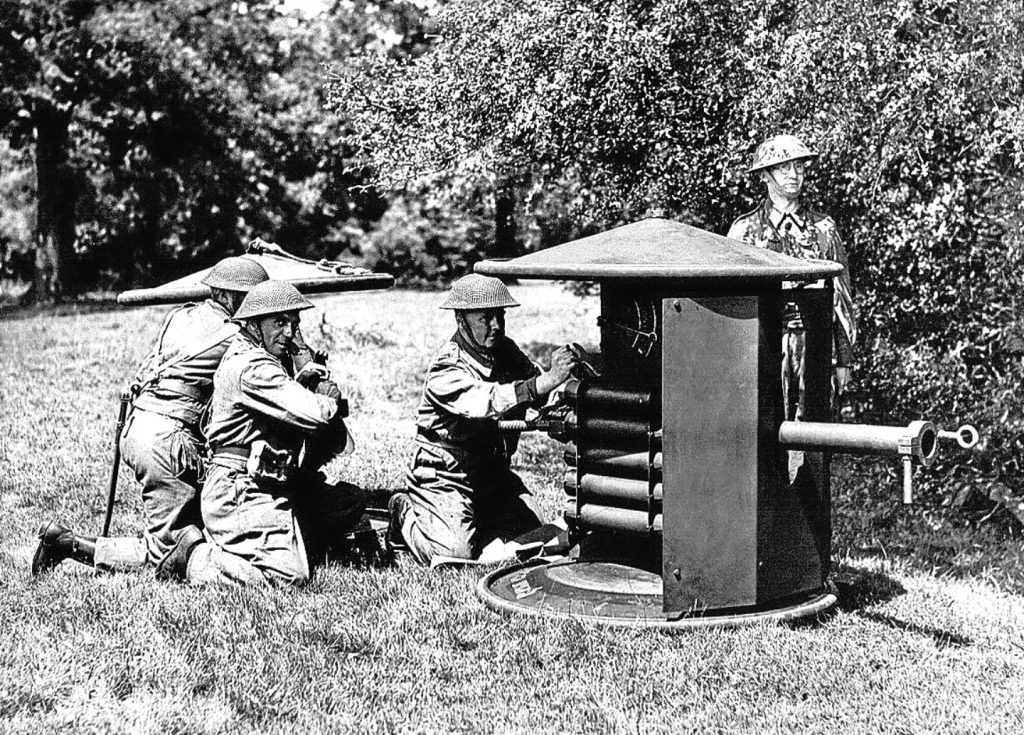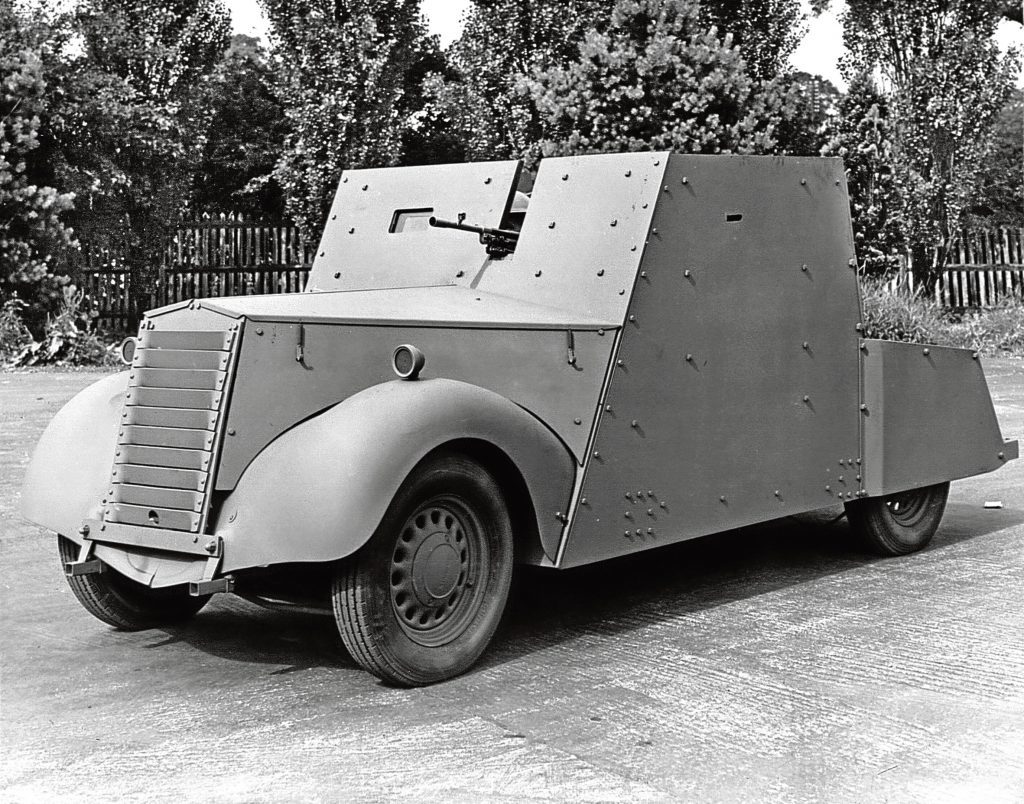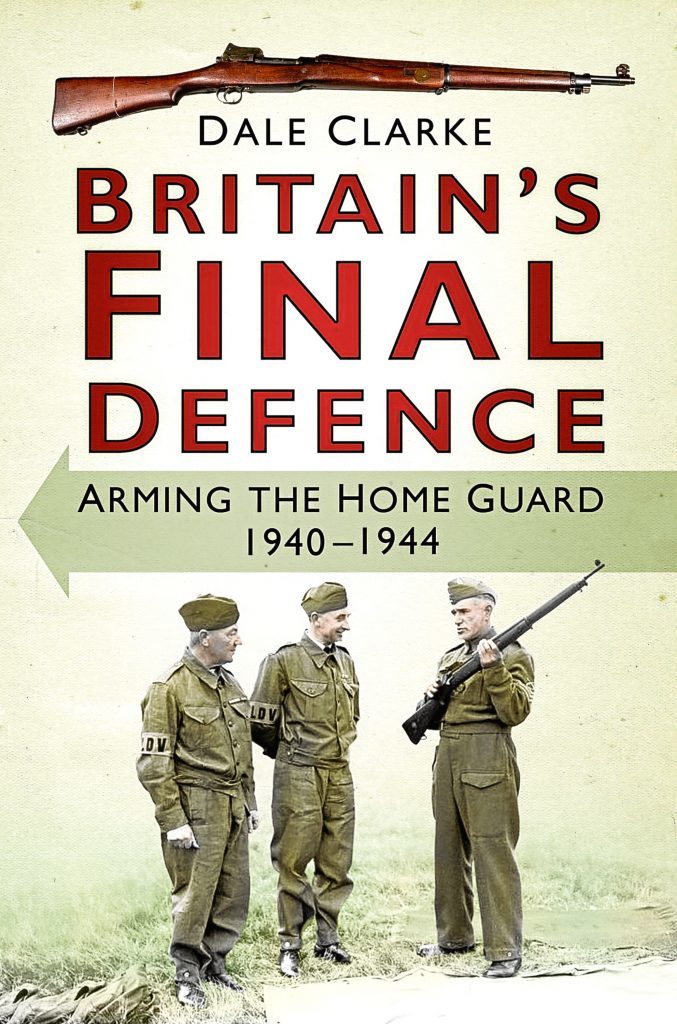
WE all enjoy a giggle at the antics of Dad’s Army, and the idea of being protected from the Nazis by a motley collection of old men, ill-equipped and poorly-trained, made us laugh.
The real Home Guard, however, were a far-different proposition and took their tasks deadly seriously.
Ironically, many of the Sten guns they used were made by the toy company Tri-ang, but there was nothing childish or silly about the 1.5 million men and women who were our last line of defence.
A new book explores these unsung heroes, men and women of every age and background, the equipment they had to work with and how they planned to hold Hitler’s forces at bay if they set foot on our shores.
And it shows that there certainly were very few “stupid boys” whose mothers worried that they would catch the cold while out doing their duty at night.

“Dad’s Army did not represent the historical Home Guard any more than ’Allo ’Allo can be said to represent the French Resistance,” says author Dale Clarke, a serving British soldier of 35 years’ experience.
“Liberties were taken and omissions made for the comedy formula to work. Entire demographic groups are omitted.
“Specifically, female auxiliaries, men of military age in reserved occupations and the political element that was so influential during the earlier part of the Home Guard’s existence.
“The Home Guard had been largely ignored, despite the fact the formation of an armed ‘people’s militia’, numbering almost two million men and tens of thousands of women at its peak, is among the UK’s more- dramatic responses to ‘total war’.”
Dale goes on to look seriously at the question of whether the Home Guard was “an elaborate confidence trick to engage the British public in the war effort, or a crucial component of Home Defence”.
He says: “What we will demonstrate, however, is that efforts to arm the Home Guard were serious, and even the most-elderly and optimistic weapons in the Home Guard were shared with other fighting services.”

One thing the real Captain Mainwarings would have had to do, if the nightmare scenario came to pass, was see off German troops parachuted into the UK.
“The possibility of airborne assault on the UK had been discussed since the first tentative ascents in hot-air balloons,” says Dale. “But, in truth, air landings had been the stuff of science fiction.
“That was changed by the German assault on Norway, the effective use of parachute and air-landing troops there, and then the Low Countries, added to the threat.
“Importantly, the British public’s response to this new threat was not to flee, or demand that the Government sue for peace, but rather to insist that the population be assisted to take up arms.
“This happened first unofficially as vigilante groups — the so-called ‘Parashots’ — spontaneously formed, and then, following a radio broadcast on the evening of May 14, 1940, by Anthony Eden, as officially-sanctioned ‘Local Defence Volunteers’.”
Clearly, then, men and women across the nation were only too keen to be given something to hit them back with, and just as capable to get out there and do it!
By 1940, Hitler was still desperate to avoid invading Britain though, behind the scenes, his preparations to do just that were well advanced.
We had scoffed at a peace offer from the Nazis, and so he resorted to having his Luftwaffe drop leaflets headed A Last Appeal To Reason By Adolf Hitler.
“It was a headline,” says Dale. “Viewed from the British perspective, it could hardly fail to be seen as the start of the final countdown.
“Detailed invasion planning was indeed underway, the initial concept being for 13 German divisions to be landed on a broad front, at Weymouth, between Portsmouth and Brighton, and between Margate and Hastings, with a follow-on force of 26 divisions.
“In May, 1940, it was assumed that to place the nation in arms, the Government would simply issue a rifle to every volunteer. As Churchill reassuringly put it: ‘I am assured that there are plenty of rifles at any rate.’”
With every farmer, butcher, candlestick maker, mother, granny and headmistress having access to a lethal weapon, Germany would make a serious error if it tried to invade.
Or so the theory went, anyway, except that we then realised we had a “rifle crisis”.

“Although Britain had been at war since September, 1939, there was almost no production of service rifles in the UK,” Dale reveals.
“Production had been terminated after the First World War.
“In anticipation of war, sites were purchased for factories to build No 4 rifles at Liverpool, Sheffield, and Birmingham. But it would take at least two years for the new factories to reach volume production.
“Thus, from September, 1939, until late 1941 — or later, as it turned out — the provision of British service rifles depended on new production at one privately-owned factory, and the cannibalisation of old weapons.”
In other words, if Hitler’s forces had struck then, Britain might have been full of ordinary folk willing to take them on, but missing anything to take them on with.
Eventually, thankfully, the Home Guard would have the Smith gun, the Sten gun, 18-pounded field guns and anti-tank weapons.
The sea front at Bognor Regis would have six-pounder tank guns mounted on car wheels, and armoured Beaverette vehicles would patrol the highest-risk areas.
And those many brave men and women, from all sorts of backgrounds and every walk of life and all age groups, would be at last trained and ready for anything they could throw at us.
So, next time you laugh along at Dad’s Army, just bear in mind that though it was a time when if you didn’t laugh you’d cry, it was also deadly serious.
The Home Guard were just as courageous, in their own way, as our lads and lasses across the world, and we should all remember them with gratitude, too.
Britain’s Final Defence: Arming The Home Guard, 1940-1944, by Dale Clarke, is published by The History Press, ISBN No. 978-0-7509-6731-0, price £25.
READ MORE
VIDEO: Armistice Day marked across Scotland
In pictures: Incredible images from Army Photographic Competition showcase life in the forces

Enjoy the convenience of having The Sunday Post delivered as a digital ePaper straight to your smartphone, tablet or computer.
Subscribe for only £5.49 a month and enjoy all the benefits of the printed paper as a digital replica.
Subscribe